#Ancient Roman Religion
Text
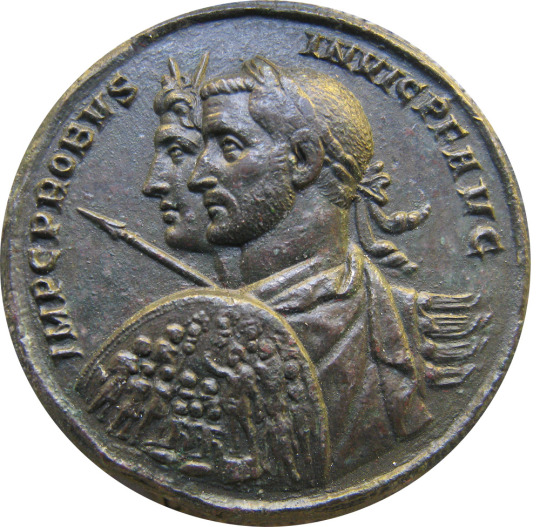
Coin minted ca. 280 CE by the Roman emperor Marcus Aurelius Probus (r. 276-282). Probus is shown in the company of Sol Invictus ("Unconquered Sun"), a late form of the solar deity whose worship had been promoted by Probus' predecessor Aurelian. The birthday of Sol Invictus (Dies Natalis Solis Invicti) was traditionally celebrated on Dec. 25. On this coin, Probus, who was constantly on campaign during his brief reign, is shown prepared for battle with shield and spear, alongside Sol Invictus, who wears his characteristic radiant crown. Now in the National Museum of Denmark, Copenhagen. Photo credit: ChrisO/Wikimedia Commons.
#classics#tagamemnon#Ancient Rome#Roman Empire#ancient history#Roman history#Probus#M. Aurelius Probus#Roman religion#Ancient Roman religion#religio Romana#Sol Invictus#art#art history#ancient art#Roman art#Ancient Roman art#Roman Imperial art#coins#ancient coins#Roman coins#Ancient Roman coins#numismatics#ancient numismatics#Roman numismatics#National Museum of Denmark
434 notes
·
View notes
Text
It was both Etruscan and Roman practice that the place where a lightning bolt struck should be enclosed and either covered or, less usually, left open. The remains of numerous such stone enclosures have been found, bearing inscriptions such as fulgur conditum.
— O. Hekster and J. Rich, Octavian and the thunderbolt: The temple of Apollo Palatinus and Roman traditions of temple building
#HISTORIA 📔#ancient rome#ancient roman religion#religio romana#<- belongs to the sphere of religion so; cool as hell tradition btw
11 notes
·
View notes
Text
a little summary for the non-Italian-speaking folks who'll run into this post:
a capitolium - a tripartite temple, that is - has been discovered in the city of Sarsina, province of Forlì-Cesena, Italy. it most likely dates back to the 1st century BCE. more studies will be done on the building, which will probably lead to a deeper understanding of ancient Roman religion.
#silly-sybil-informs#cultus-deorum::🪔#all-things-pagan::🌿#roman paganism#roman polytheism#roman pantheon#religio romana#cultus deorum#roman polytheist#ancient roman religion#paganism#roman religion#archeology
25 notes
·
View notes
Text
January God
In ancient Roman religion and mythology, Janus is the god of beginnings and transitions, thence also of gates, doors, doorways, endings and time. He is usually a two-faced god since he looks to the future and the past. The Romans dedicated the month of January to Janus. His most apparent remnant in modern culture is his namesake, the month of January.
The Nobel Prize winning poet, Seamus Heaney,…

View On WordPress
#&039;January God&039;#Ancient Irish History#Ancient Roman Religion#Boa Island#Co. Fermanagh#Eniskillin#From Cruach#Ireland#Irish History#January#Janus Figure#Mythology#Seamus Heaney#The Secret of Kells
7 notes
·
View notes
Note
Myths aside and out of curiosity, did any ancient Greeks worship Cronus the same way the Romans saw Saturn?
I found some references to Kronos' veneration in Chaironeia, Pelion, Thebes, Arcadia and Minor Asia coast. In Olympia there was Kronios Hill, where they did sacrifices, and in Athens there was the sanctuary of Kronos and Rhea next to Zeus' temple.
We have information that the Athenians celebrated Kronia (Κρόνια), which later became the Roman festival of Saturnalia. It was at the beginning of the year (in the Εκατομβαιών month), towards the end of our modern July. It commemorated the time Kronos and Ilios (the sun) reigned upon the earth, the Golden Age of the Human Race, when there were no slaves and masters. That day the slaves could sit on their masters' tables, and sometimes the masters served the slaves. It was a festival to give thanks for the fertile earth and ask for a good harvest for the year to come. It's very possible that some of the Greek New Year traditions like singing kalanda and using/breaking pomegranates for good luck and fertility hail from the festival of Kronia.
That's some condensed information but I hope it's enough for you to start your search!
85 notes
·
View notes
Text
Finding Persephone : women's rituals in the ancient Mediterranean : Free Download, Borrow, and Streaming : Internet Archive
4 notes
·
View notes
Text
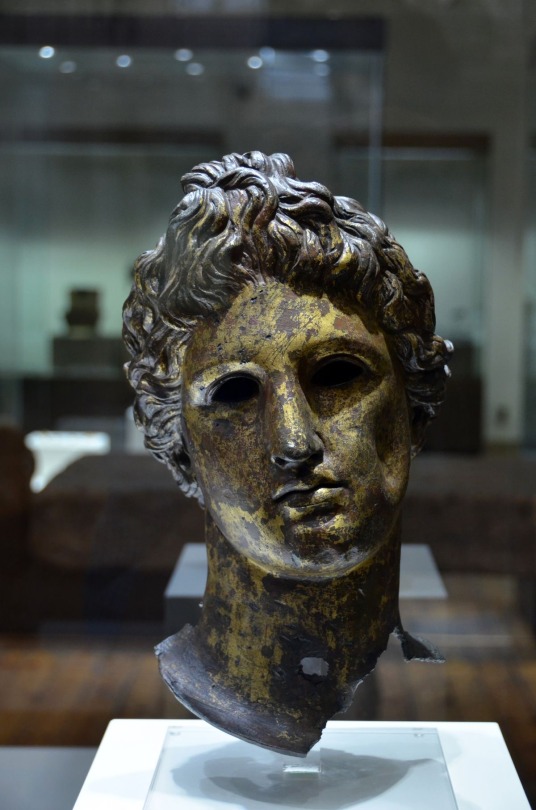
Roman period Head of Apollo
#apollo#ancient rome#art#gods#roman#roman mythology#religion#history#europe#european#thrace#thracian#serdica#serdika#sofia#bulgaria#archaeology#bulgarian#museum#olympian#deity#deities#greek mythology#mythology#olympians
4K notes
·
View notes
Text
2,000-Year-Old Fayum Portraits from Roman Egypt: also known as "mummy portraits," these funerary paintings were often fastened to the coffins of the people they depicted
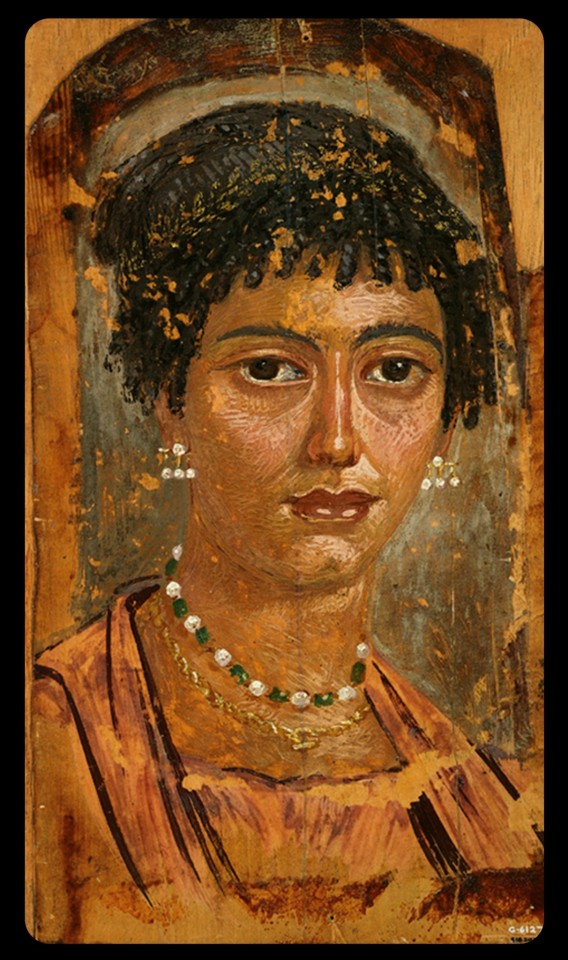
Above: Fayum portrait of a woman from Roman-occupied Egypt, c.100-110 CE
Fayum portraiture was a popular funerary practice among the upper-class families of Roman Egypt from about 50 CE to 250 CE. Given the high mortality rates for children during this period, many of these portraits depict children and youths, but adults were often featured, too.
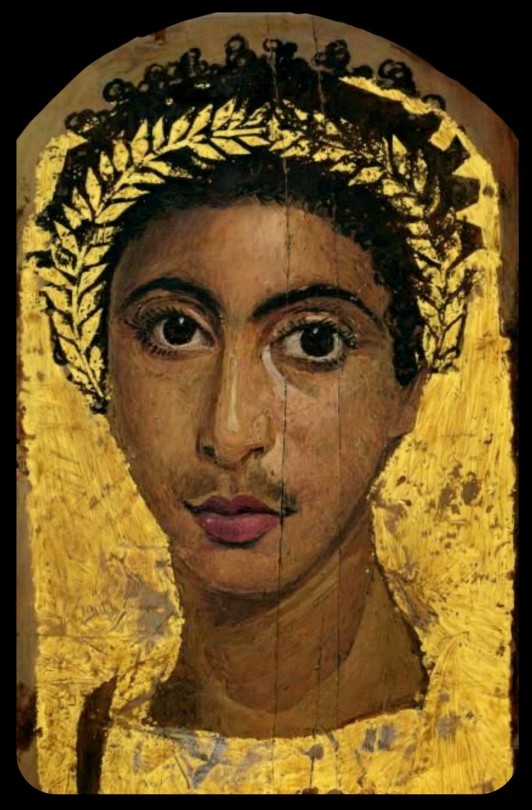
Above: portrait of a youth wearing a golden wreath, c.130-150 CE; the wreath and the background of the portrait are both gilded
The population of the Faiyum Delta, where most of these portraits were found, largely contained individuals with both native Egyptian/North African and Greek heritage. The Greek lineages can be traced back to the Ptolemaic period, when the Greeks gained control of Egypt and began to establish settlements throughout the region, gradually leading to a cultural diffusion between the Greek and Egyptian populations. The Romans eventually took control of Egypt in 31 CE, absorbing it into the Roman Empire and colonizing much of North Africa, but the demographics of the Faiyum Delta remained largely unchanged.

Above: portrait of a man with a mole on his nose, c.130-150 CE
Many of these Fayum portraits reflect the same blend of ethnic and cultural roots, depicting individuals with both Greek and native Egyptian heritage (a claim that is supported by both archaeological and genetic evidence). Some portraits may also depict native Egyptians who did not have any European ancestry, but had been integrated into Greco-Roman society.

Above: portrait of a bearded man, c.170-180 CE
These representations of native Egyptians provide us with unique insights into the actual demographics of Roman-occupied Egypt (and the ancient world at large). Non-European peoples are rarely included in depictions of the classical world; it's also interesting to see the blend of cultural elements that these portraits represent.

Above: portrait of a priest of Serapis, c.140-160 CE; the man in this portrait is shown wearing a fillet/crown that bears the seven-pointed star of the Greco-Egyptian god, Serapis
As this article explains:
In the 1800s and early 1900s, Western art historians didn’t know what to make of these portraits. Scholars of Roman history labeled them Egyptian. Scholars of Egyptian history labeled them Greco-Roman. These binary academic classifications failed to capture the true complexity of the ancient (or, indeed, modern) Mediterranean. In reality, Fayum portraits are a syncretic form, merging Egyptian and Greco-Roman art and funerary practices. They reflect the cosmopolitanism of both Roman and Egyptian history.
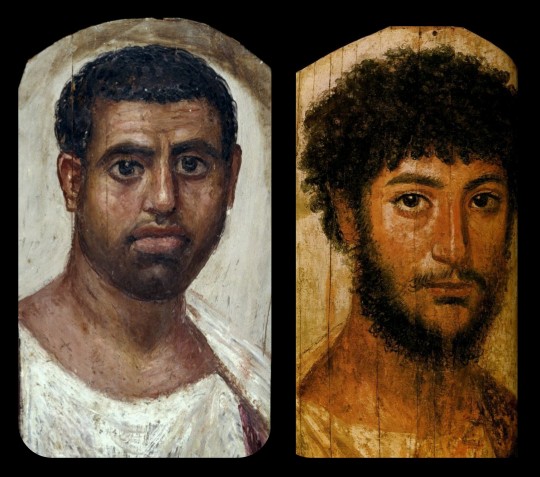
Above: portrait of a man, c.80-100 CE (left); portrait of a bearded officer, sometimes referred to as "Perseus," c.130-175 CE (right)
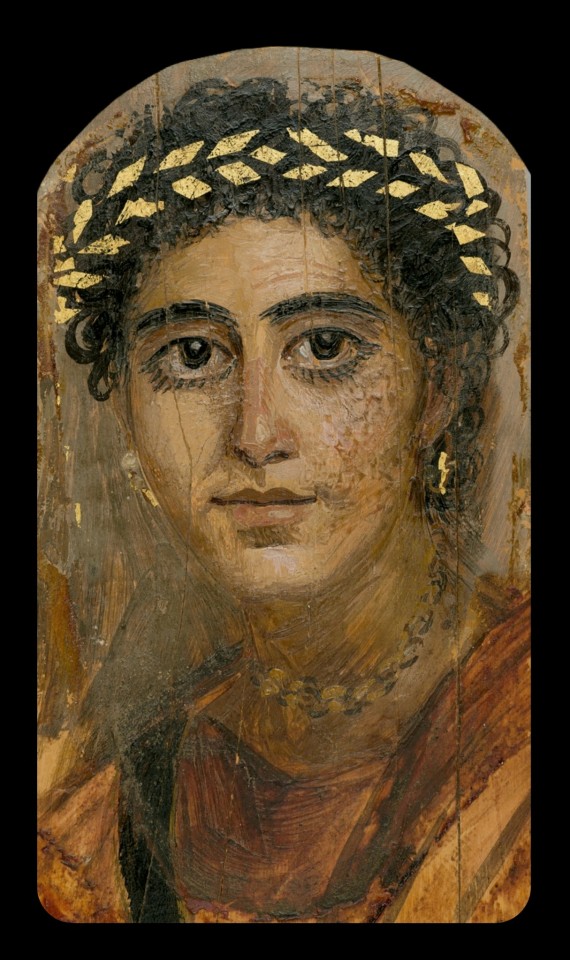
Above: portrait of a young woman in red, c.90-120 CE
Nearly 1,000 of these portraits are currently known to exist.
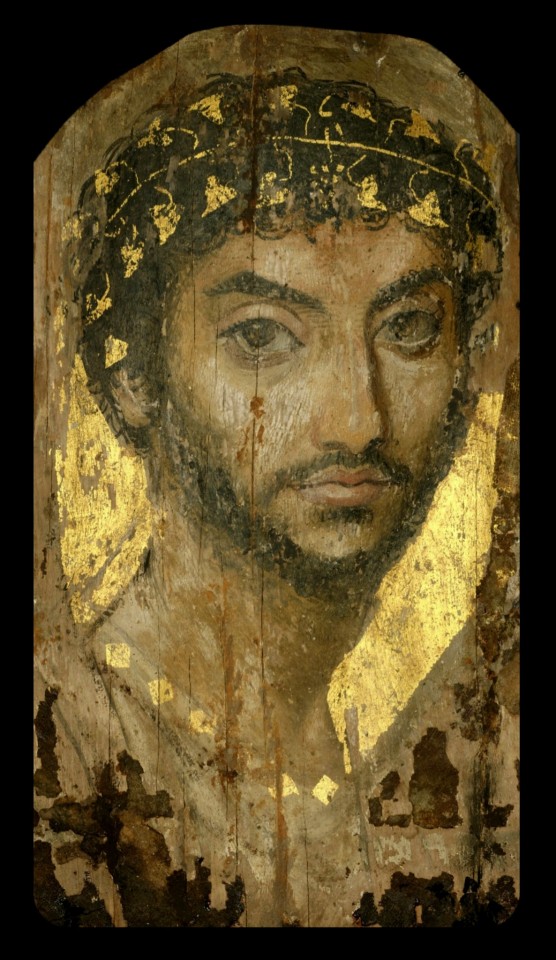
Above: portrait of a man wearing a gilded ivy wreath, c.100-150 CE
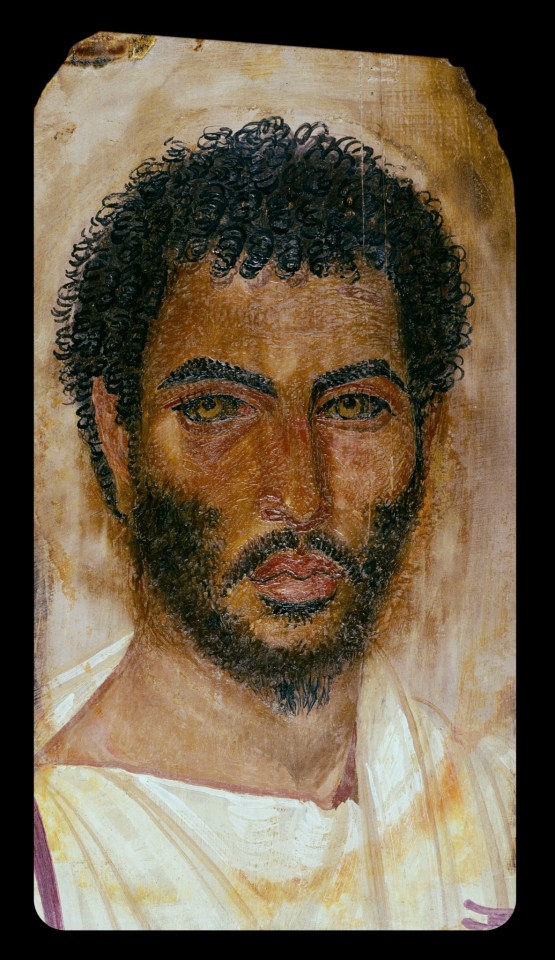
Above: portrait of a bearded man, c.150-170 CE
Sources & More Info:
Curationist: Fayum Portraits
Harvard Art Museums: Giving the Dead their Due: an Exhibition Re-Examines Funerary Portraits from Roman Egypt
Getty Museum: APPEAR Project
Getty Museum: Faces of Roman Egypt
National Geographic: Ancient Egypt's Stunning, Lifelike Mummy Portraits
The Athens Centre: The Myth of Whiteness in Classical Sculpture
Forbes: Whitewashing Ancient Statues: Whiteness, Racism and Color in the Ancient World
#archaeology#artifact#anthropology#history#ancient history#art#fayum portraits#roman egypt#ancient rome#ethnography#painting#portrait#north africa#people of color#egypt#religion#greco roman#greek#classical antiquity#fayum#mummy portraits#romano egyptian#representation
223 notes
·
View notes
Text
While checking around for my “Roman gods are not Greek gods” posts, I found back this tripartition of mythology, which is actually a fact that everybody should kno about if they want to dabble in Greco-Roman myths (especially Greek myths).
We know that, during Antiquity, the Romans and the Greeks thought that there wasn’t just one, but three different types of “theology” - three different views, perceptions and reception of the gods.
The first theology was the theology of the priests and of the state - aka, religion. The Greek gods as perceived and described by religion, as honored through rituals and festivals.
The second theology is the “mythic theology” - what we call “mythology today”. It is a set of legends, folktales and stories that are not part of religion, but rather used and carried by art - it is the gods are seen, perceived and described by the poets, by the epics, by the theater plays.
The third theology is the theology of the philosophers - who used the gods and their tales as images and allegories for various abstract or concrete topics. It is the gods as depictions and description of natural phenomenon, or the myths as a way to actualy exemplify a social fact or explain psychological workings.
For the classic Greeks and Romans, there was a clear divide between those three very different point of view of the gods. It was basically three different versions of the pantheon. This is notably why you will find texts noting that priests disliked and condemned the poets’ mythological works, due to them being blasphemous and making the gods too human when religion described them as perfect ; and it is also why the philosophers of old dissed on and rejected the literary works of mythology as nonsense only good to feed superstitions, because for them the gods weren’t characters or realities, but rather abstract concepts and rhetorical allegories.
This is something I feel needs to be reminded, because today these three different theologies have been mixed up into one big mess - as literary myths are placed one the same level as philosophical “myths” (actually texts taking the shape of myths), and both considered of outmost religious importance. When in fact, things were quite different...
EDIT: I was asked if there was a myth that could illustrate the three different theologies, and on the spot I would say “the affair between Aphrodite and Ares”.
This story originates from the “mythological theology”. It is primarily a story, and a good one. It is the story of a husband who discovers his wife is unfaithful and tries to get revenge, it is the story of an extra-marital affair gone wrong, it is typical set of divine shenanigans ending on a grotesque display of divine humiliation - it is an excellent narrative material for plays and poems (and the legend does originates from poems).
The story was also dearly beloved and reused by the “philosophical theology”, because the philosophers adored the idea of the love between Ares and Aphrodite - for them it was the perfect depiction of how the concepts of “love” and “war” , despite being seemingly opposite, attracted each other and were closely tied. For them, this story isn’t to be taken literaly as “a god cheated on another god”, but rather as “this is an allegory showing that love and war are two sides of the same coin, which is why Aphrodite falls for Ares despite being married to Hephaistos”. But for them the whole net part is just poetic nonsense invented to make people laugh ; or maybe they will reinvent them as a moral, cautionary tale that should be used to warn people of the dangers of unfaithfulness.
And then there’s the “religious theology”, the point of view of the priests - for whom such a story is mockery and sacrilege. You can imagine them saying: “You are making the gods look like fools! Gods don’t cheat on each other, gods don’t get captured in nets while butt-naked, gods don’t even sleep on beds - GODS DO NOT EVEN HAVE HUMAN FORMS IN THEIR NATURAL STATE - what the heck is this bullshit you’re saying, you’re just insulting the gods by turning them into lecherous humans and grotesque clowns for your vulgar story!” (This is a reconstitution and not the actual words of an Ancient Greek priest)
#greek gods#roman gods#greek mythology#greek religion#roman mythology#roman religion#ancient theology
618 notes
·
View notes
Text
the book trend that needs to be left in the dust for the new year is greek mythology retellings. i am so sick and tired of "retellings" of greek (or roman, but mainly greek) mythology from authors that clearly have a very surface level pop cultural understanding of the myth(s) they're adapting and the culture(s) they're depicting. especially the many that market themselves as "feminist retellings" where the "feminism" is basically just "men bad sometimes", and especially when they're "feminist retellings" that take some of the few mythological women who get happy endings and take it away from them for the sake of saying "men bad sometimes". it's all so shallow and they exploded this year and i'm sick of it.
#i wish so fucking much to read one (1) singular actually good feminist retelling of greek mythology#but they're always so shallow both in their messaging and their understanding of ancient greek culture and religion#i speak#anti booktok#sort of anyway?#greek mythology#bc i can't make a single post tangentially about myth without bitching about medusa:#so many people in publishing clearly got everything they learned about medusa from popular online depictions#and especially the books that are specifically about medusa blending greek and roman mythology despite them having very distinct elements
165 notes
·
View notes
Text

The god Hesperus sits on a throne and holds a tall torch. Around him are Apollo-Helios (identifiable by his halo), Aphrodite (crowned), and other deities. Wall painting in the Fourth Style from the exedra of the House of M. Gavius Rufus (VII.2.16) at Pompeii; now in the National Archaeological Museum, Naples. Photo credit: ArchaiOptix/Wikimedia Commons.
#classics#tagamemnon#Ancient Rome#Roman Empire#Pompeii#Greek religion#Ancient Greek religion#Hellenic polytheism#Roman religion#Ancient Roman religion#religio Romana#Dionysus#Dionysos#Helios#Aphrodite#art#art history#ancient art#Roman art#Ancient Roman art#Roman Imperial art#wall painting#fresco#Fourth Style#NAM Naples
526 notes
·
View notes
Text
According to Cicero, the temple of Honos outside the Colline Gate was founded in response to the discovery at a nearby altar of a metal plate bearing the inscription Honoris.
— O. Hekster and J. Rich, Octavian and the thunderbolt: The temple of Apollo Palatinus and Roman traditions of temple building
3 notes
·
View notes
Text
a brief summary for English-speakers:
back in Ancient Rome, Caligola had two ships built in Lake Nemi to host the cult of goddess Isis (I have already discussed this in my post about Diana and Nemi). both crafts eventually sinked, and it took hundreds of years to successfully get them out.
it took three years to get them out, from 1929 to 1931. very unluckily, though, the ships were lit on fire in 1944, during WWII. many speculations surrounded the accident: some folks believed that a couple of kids were responsible, others would claim that it had been the Germans trying to escape.
the mystery has now been solved, apparently, thanks to archaeologist Flavio Altamura and historian Stefano Paolucci. after analysing the evidence carefully, it was discovered that the American army had bombed the museum where the ships were held to destroy a German settlement, filled with weapons.
#cultus-deorum::🪔#silly-sybil-informs#all-things-pagan::🌿#roman polytheism#roman paganism#roman pantheon#religio romana#cultus deorum#roman polytheist#paganism#ancient roman religion#roman pagan#roman religion#world war ii#world war 2#history#ancient rome#contemporary history
4 notes
·
View notes
Text
January God
In ancient Roman religion and mythology, Janus is the god of beginnings and transitions, thence also of gates, doors, doorways, endings and time. He is usually a two-faced god since he looks to the future and the past. The Romans dedicated the month of January to Janus. His most apparent remnant in modern culture is his namesake, the month of January.
The Nobel Prize winning poet, Seamus Heaney,…

View On WordPress
#&039;January God&039;#Ancient Irish History#Ancient Roman Religion#Boa Island#Co. Fermanagh#Eniskillin#From Cruach#Ireland#Irish History#January#Janus Figure#Mythology#Seamus Heaney#The Secret of Kells
16 notes
·
View notes
Text
Time Travel Question 55: Medievalish and Earlier
If you could travel through time, but only to see something for Research or for Fun, not to change anything, what would you pick? Yes, you may have a Babel Fish in your ear to translate.
These Questions are the result of suggestions a the previous iteration. This category may include suggestions made too late to fall into the correct earlier time grouping. In some cases a culture lasted a really long time and I grouped them by whether it was likely the later or earlier grouping made the most sense with the information I had.
Please add new suggestions below if you have them for future consideration. All cultures and time periods welcome.
#Time Travel#Middle Ages#Basilica of Saint Francis of Assisi#Art History#Italian History#Cimabue#Giotto#Simone Martini#Pietro Lorenzetti#Pietro Cavallini#lithophones#History of Music#Homins#Prehistory#Minoans#mythology#Minoan mythology#Ancient Greece#Ancient Rome#Roman Religion#Ötzi#Ötzi the Ice Man#Neanderthal#Neanderthals#Fashion History#Folklore#History of Food
80 notes
·
View notes
Text


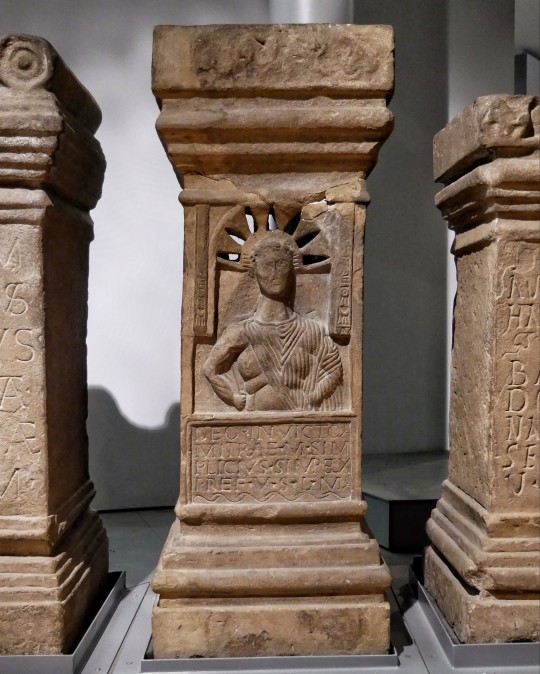
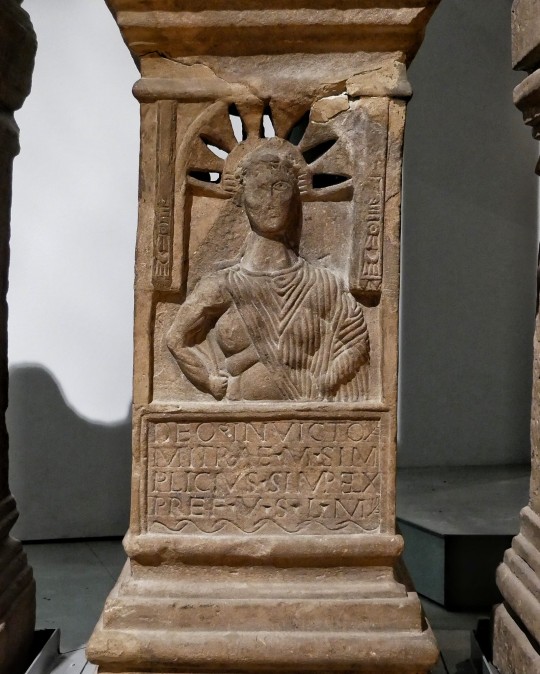
Roman Altar found in Carrawburgh Mithraeum, Hadrian's Wall, Great North Museum, Hancock, Newcastle upon Tyne
#roman#roman army#roman fort#roman altar#hadrian's wall#archaeology#roman relic#roman religion#romans#deity#mithras#mithraeum#ancient cultures#ancient living#Northumberland
193 notes
·
View notes